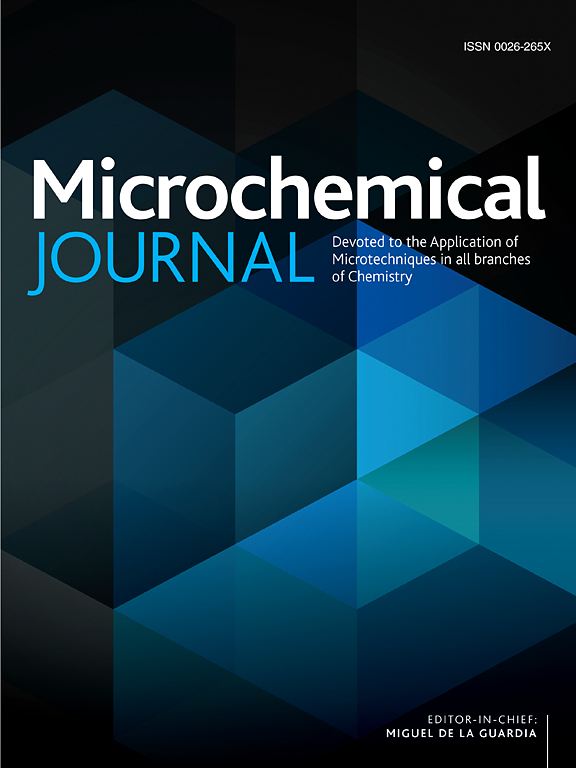A label-free photoelectrochemical aptasensor utilizing Ag2S quantum dot-sensitized In2O3/BiOBr heterojunction for β-lactoglobulin detection in milk samples
IF 4.9
2区 化学
Q1 CHEMISTRY, ANALYTICAL
引用次数: 0
Abstract
Cow’s milk allergy is a prevalent food allergy, with β-lactoglobulin (β-Lg) identified as one of the major allergenic proteins in cow’s milk. The accurate detection of β-Lg is crucial for reducing the risk of allergic reactions. In this study, a novel label-free photoelectrochemical (PEC) aptasensor was developed for the detection of β-Lg in milk, utilizing an In2O3/BiOBr heterojunction composite material. Sensitization of the heterojunction with Ag2S quantum dots (QDs) enhanced the photosensitivity, leading to a significant increase in photocurrent response. The In2O3/BiOBr heterojunction improved solar energy utilization and enhanced light absorption across the visible spectrum. The photocurrent signal intensity decreased proportionally with increasing β-Lg concentration due to the specific binding with the aptamer. Under optimized experimental conditions, the PEC aptasensor exhibited a wide linear detection range from 0.001 ng/mL to 100 ng/mL and achieved a detection limit of 2.31 pg/mL. The sensor proved excellent selectivity, stability, reproducibility, and a broad linear range, offering a promising method for β-Lg detection in real milk samples.

求助全文
约1分钟内获得全文
求助全文
来源期刊

Microchemical Journal
化学-分析化学
CiteScore
8.70
自引率
8.30%
发文量
1131
审稿时长
1.9 months
期刊介绍:
The Microchemical Journal is a peer reviewed journal devoted to all aspects and phases of analytical chemistry and chemical analysis. The Microchemical Journal publishes articles which are at the forefront of modern analytical chemistry and cover innovations in the techniques to the finest possible limits. This includes fundamental aspects, instrumentation, new developments, innovative and novel methods and applications including environmental and clinical field.
Traditional classical analytical methods such as spectrophotometry and titrimetry as well as established instrumentation methods such as flame and graphite furnace atomic absorption spectrometry, gas chromatography, and modified glassy or carbon electrode electrochemical methods will be considered, provided they show significant improvements and novelty compared to the established methods.
 求助内容:
求助内容: 应助结果提醒方式:
应助结果提醒方式:


